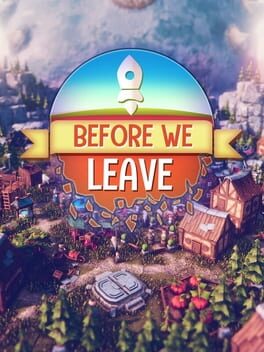There's definitely a solid core of crunchy city-building within this game. The core logic of a hex-based map with various adjacency bonuses is smart, giving rise to a lot of emergent strategy out of a relatively understandable set of mechanics. But it fumbles many of the details that are necessary to grow that idea into a complete game, and ends up a frustrating shadow of what it could have been.
While my wife and I played this game together, we came up with a laundry list of complaints about it ranging from the control scheme (Why is there no hotkey for switching between planets?) to the UI decisions (Adjusting storage in a warehouse is a nightmare) to the onboarding (Why is there no Civilopedia equivalent? Why doesn't it explain core concepts like "an action"?). But ultimately, our biggest issues fell into two categories: transparency and suburbism.
The first is especially egregious in comparison to The Colonists, which is an excellent city-builder largely because it gives the player so much visibility into and control over the details of how resources flow through your civ. This is crucial for games like this, because it provides another avenue of emergent strategy, but it's totally absent in Before We Leave where you can see resources in motion, but you can't easily track them at rest or understand how their flow operates over time. It's hard to understand the paths your peeps travel even though the adjacency mechanics make this pathing critical to the player's success.
Specifically, passing near certain tiles (fountains, trees) improves the mood of a given peep while passing near others (tall buildings, pollution) makes them unhappy. Because housing imposes substantial tall building "gloom" penalties and the best food production produces pollution, you're incentivized to reproduce a suburban city layout with home, work, and food separated strictly by function. While this could pose an interesting mechanical puzzle, as a human player I want to build a city I'd like to live in. I personally love walking among mixed-use apartments, row houses, and restaurants and it's a bummer to play a game that frames that as bad.
Even the mechanical puzzle kind of sucks, though. The gloom mechanic discourages density of housing, but housing adjacency bonuses are so strong as to outweigh that completely—meaning that you just have an ambient gloom penalty all the time that you can't really address. As the game moves to later stages, this seems to be its constant theme: it keeps asking you to cram more and more things into the same number of tiles without giving you tools to improve efficiency or positive motivation to rethink layouts. (There is one notable counterexample, the step warehouse, which is worth highlighting because I wish the game had more improvements like that.)
This was a fun few hours of initial exploration, but the substantial amount of lategame content (including fighting off hostile NPCs which we haven't even talked about) just felt like a slog. And just to add insult to injury, the unlockable "reward" tiles like the Park and the Pond simply do nothing at all! What is the point.
While my wife and I played this game together, we came up with a laundry list of complaints about it ranging from the control scheme (Why is there no hotkey for switching between planets?) to the UI decisions (Adjusting storage in a warehouse is a nightmare) to the onboarding (Why is there no Civilopedia equivalent? Why doesn't it explain core concepts like "an action"?). But ultimately, our biggest issues fell into two categories: transparency and suburbism.
The first is especially egregious in comparison to The Colonists, which is an excellent city-builder largely because it gives the player so much visibility into and control over the details of how resources flow through your civ. This is crucial for games like this, because it provides another avenue of emergent strategy, but it's totally absent in Before We Leave where you can see resources in motion, but you can't easily track them at rest or understand how their flow operates over time. It's hard to understand the paths your peeps travel even though the adjacency mechanics make this pathing critical to the player's success.
Specifically, passing near certain tiles (fountains, trees) improves the mood of a given peep while passing near others (tall buildings, pollution) makes them unhappy. Because housing imposes substantial tall building "gloom" penalties and the best food production produces pollution, you're incentivized to reproduce a suburban city layout with home, work, and food separated strictly by function. While this could pose an interesting mechanical puzzle, as a human player I want to build a city I'd like to live in. I personally love walking among mixed-use apartments, row houses, and restaurants and it's a bummer to play a game that frames that as bad.
Even the mechanical puzzle kind of sucks, though. The gloom mechanic discourages density of housing, but housing adjacency bonuses are so strong as to outweigh that completely—meaning that you just have an ambient gloom penalty all the time that you can't really address. As the game moves to later stages, this seems to be its constant theme: it keeps asking you to cram more and more things into the same number of tiles without giving you tools to improve efficiency or positive motivation to rethink layouts. (There is one notable counterexample, the step warehouse, which is worth highlighting because I wish the game had more improvements like that.)
This was a fun few hours of initial exploration, but the substantial amount of lategame content (including fighting off hostile NPCs which we haven't even talked about) just felt like a slog. And just to add insult to injury, the unlockable "reward" tiles like the Park and the Pond simply do nothing at all! What is the point.
